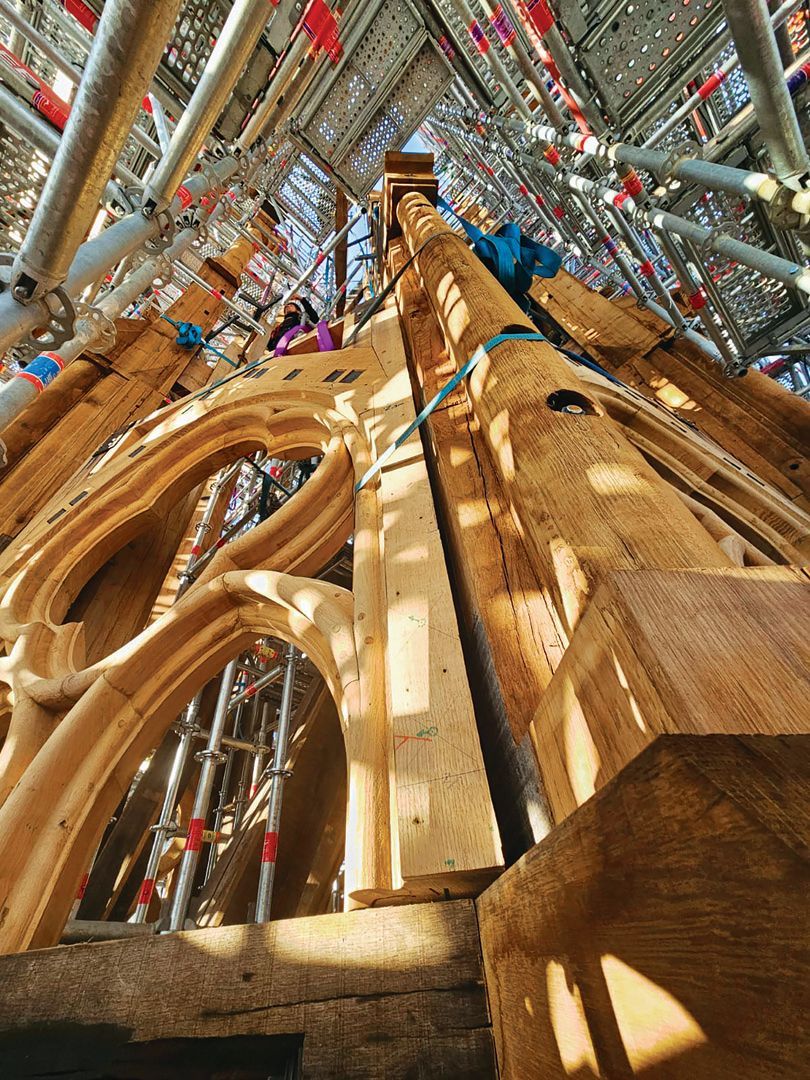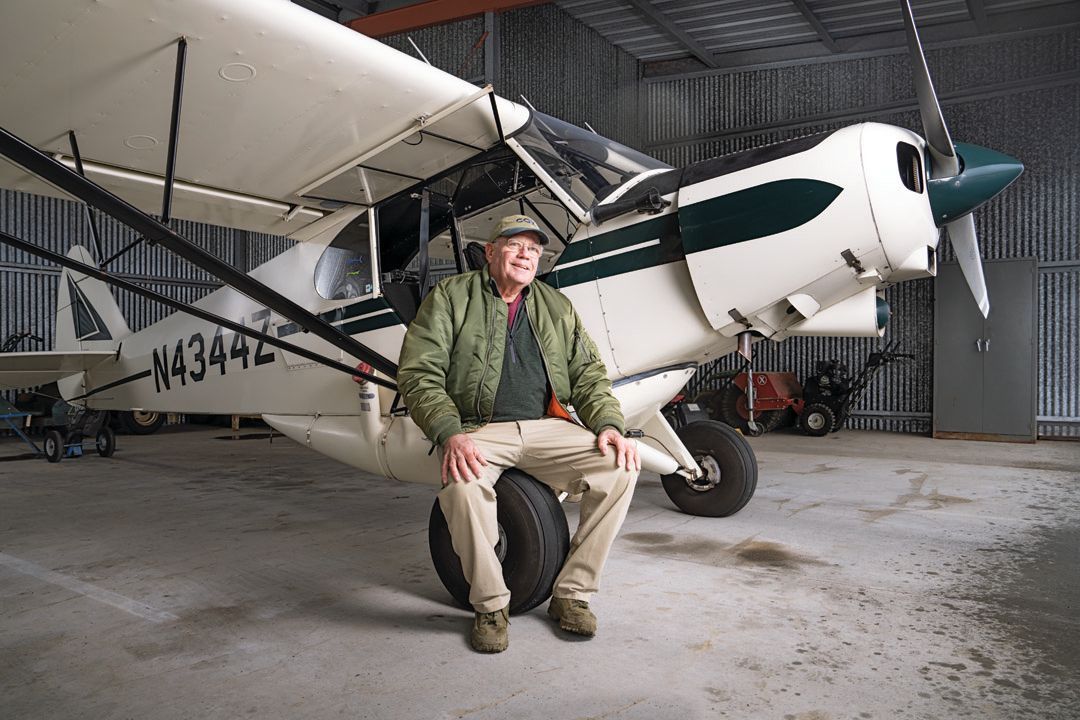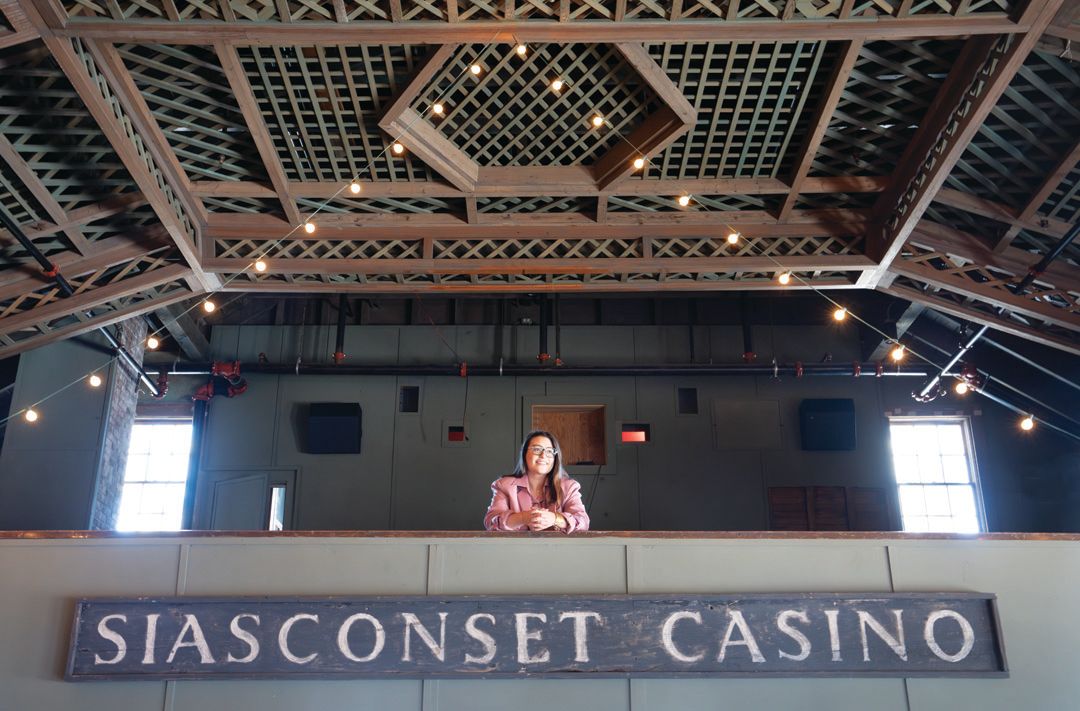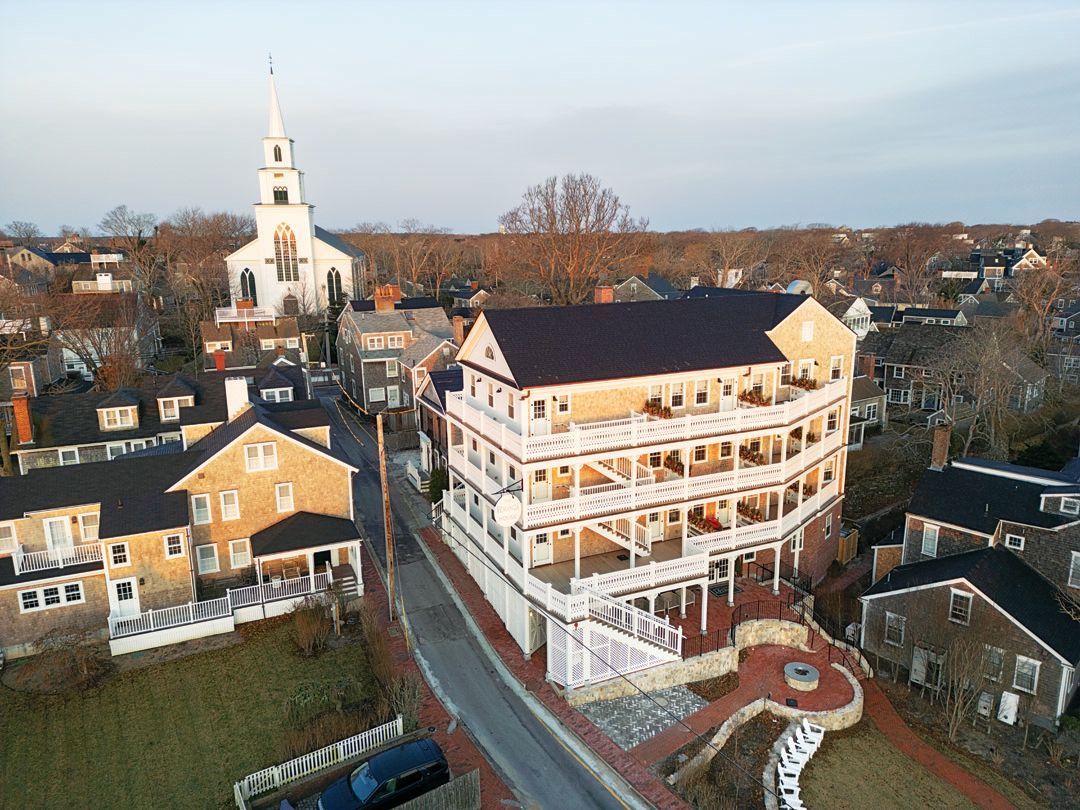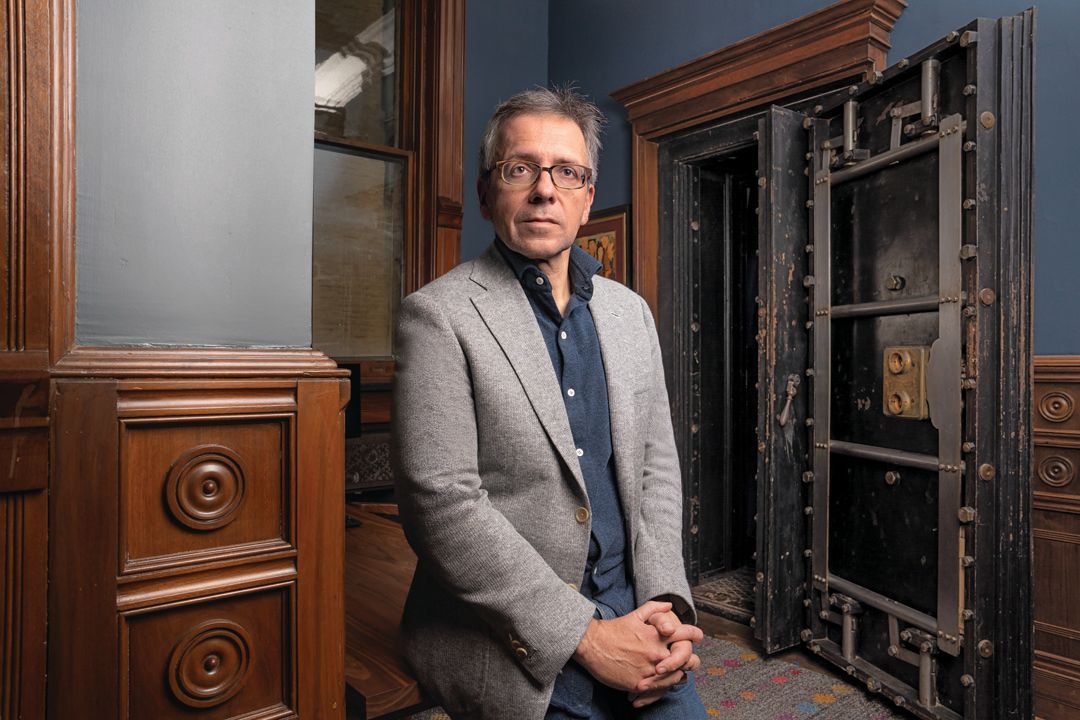The Craftsman of Notre Dame
After restoring several Nantucket buildings Michael Burrey took his talents to Paris.
Written by Brian Bushard
Photography by Brian Sager
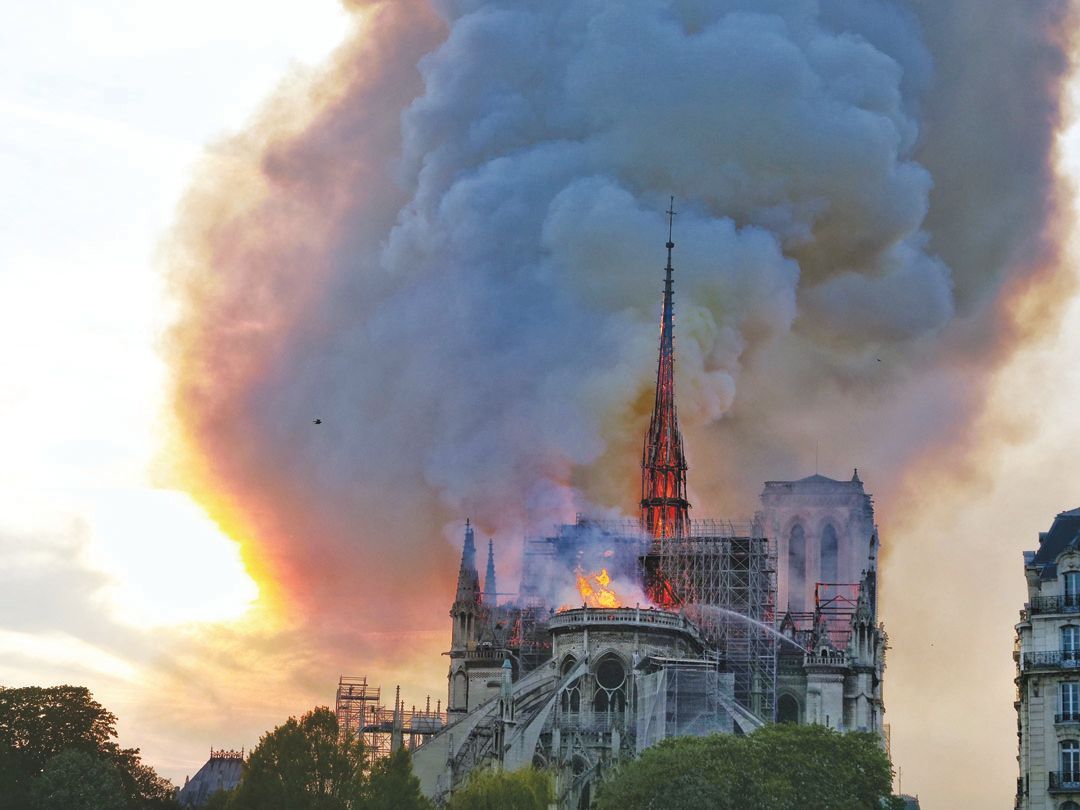
Michael Burrey could only watch as Paris’ iconic Notre Dame Cathedral burned down on April 15, 2019. Burrey was watching the fire on TV, some 3,000 miles away with his students at the North Bennet Street School, Boston’s renowned traditional trade school. There was nothing Burrey could do to save the12th-century cathedral’s crumbling spire or its wooden ceiling, but the fire got him thinking.
Burrey, a specialist in medieval architecture with a career of historic restoration projects under his belt, started working with architects and architectural historians on a reproduction of one of the cathedral’s ceiling trusses in Washington, D.C., as an educational project to show that the trusses could, in fact, be rebuilt. That re-creation caught the hopeful eye of a French company contracted to restore Notre Dame. Through that company, Burrey was brought on as one of only nine U.S. artisans to restore the cathedral, a monumental project that had Burrey in Paris for three months in 2023.Now, six years after the fire, Notre Dame is open once again. N Magazine sat down with Burrey in his classroom at North Bennet Street School to discuss his work in Paris and Nantucket.
You’ve worked on multiple restoration projects on Nantucket and have been recognized by the Nantucket Preservation Trust. What brought you to the island?
I’ve been working in preservation carpentry and masonry since I was 13 years old, and my base is in Plymouth. I’ve been working with Brian Pfeiffer, an architectural historian who has done a lot of work on Nantucket documenting buildings and structures. My introduction to Nantucket was in2007 when Brian called me up to ask if I had ever built a firebox underneath a chimney. It was 18 India Street, a 1767 house, that had suffered a collapse of the base of the chimney. I flew over, took a look at it and determined I could cradle it, pick it up, dig out from underneath it and reestablish the base of that chimney. It was one of my favorite projects. They were going to start dismantling the chimney from the top down, but realized you had to support that chimney because it was leaning toward the back, and at some point the whole thing was going to tear up and collapse into the cellar.
You also worked on the Unitarian Meeting House, another historic structure on Nantucket. How did that come about?
There were a number of things that led up to that. In 2009, we were out the restabilizing the trusses inside the roof system, and in 2010 we scaffolded the whole front of the building. We repaired all of the handmade shingles. Those were from the 1830s, when they built anew bell tower. We repaired windows and returned architectural elements that had been lost like the front door. At the bell level, we returned the railing to the way it was. We looked at photographs from the Nantucket Historical Association and determined what kind of railing was there to reproduce.
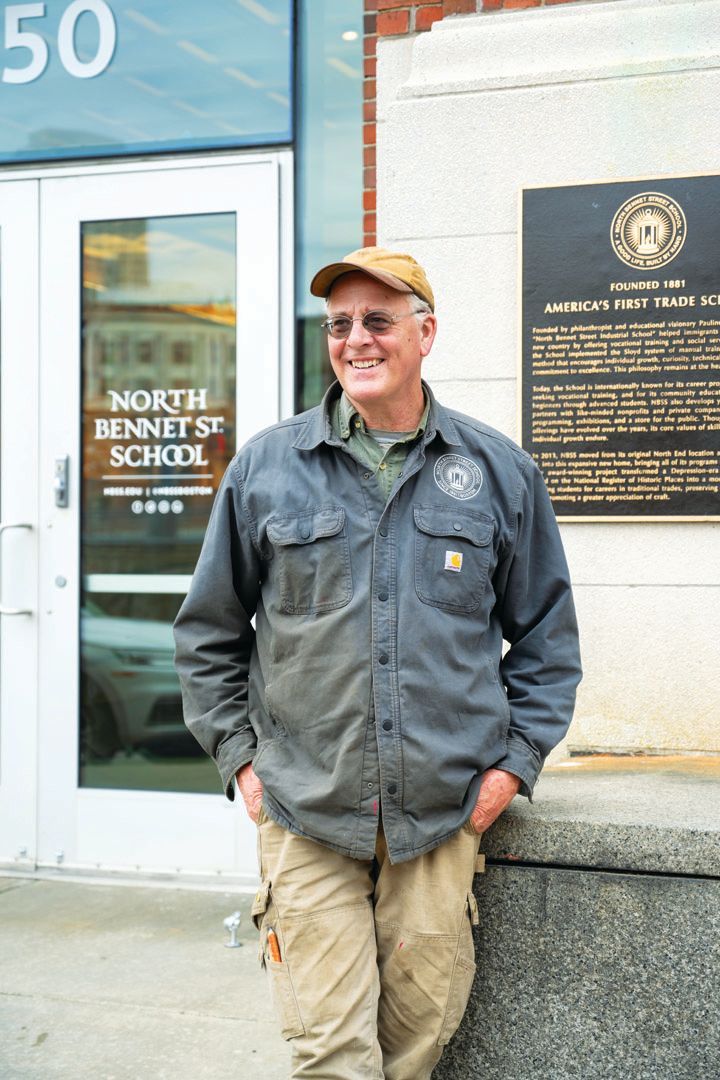
What goes into historic restoration? Where do you source your material?
I produce it myself because it’s hard to go to a sawmill and say this is what I’m looking for. There’s always something lost in translation. I go out to the log yards and buy specific logs. I look at the quality of the logs, the dimensions of the log, whether it’s old growth, how many growth rings it has per inch. Then I have a Wood-Mizer band sawmill, which is a portable sawmill, so you saw through it in the same manner they did in the 17th, 18th and early 19th centuries. It’s not just finding a white pine but a good quality white pine that has good rot resistance.
Speaking of things being lost in translation, how is it that you ended up contributing to the reconstruction of Notre Dame Cathedral?
It goes back pretty far. For the last 20 years I’ve been working at Handshouse Studio in Norwell, Massachusetts, with Rick and Laura Brown, who are both sculpture professors at MassArt [Massachusetts College of Art and Design]. One of the first projects I worked on with them was the Turtle, a Revolutionary War-era submersible built by the Bushnell brothers designed to get a load of gunpowder below the water line and attach it to a British “man-of-war” in New York Harbor. We took a six-foot-diameter spruce tree, split it in half, hollowed it out and rounded the outsides. Everything was done in a period manner. Pumps were done in a period manner. All of the blacksmithing was done as a blacksmith would in the 1770s. We took it out in Duxbury Harbor, sank it and propelled it, and then we took it down to Annapolis, Maryland, to the Naval Academy, and they dragged it through the water to test its dynamic abilities. That’s now in the International Spy Museum in Washington, D.C.
It's that kind of thing, how the Egyptians raised a 300-ton obelisk, how 300-pound stone balls were thrown with trebuchets in Scotland. [Handshouse] was doing these historic projects when Notre Dame burned. I was here at North Bennet and we’re all watching it as it came through the newsfeed and we’re all saddened by this event of this incredible cathedral losing its original roof system, and then all the knowledge and talent that went into that construction 800 years ago. We were all wondering what we could do to help repair that. It was through the [Washington, D.C.] truss project that we made contact with one of four French companies that got the contract to build the roof structure and the spire. They were looking for interactions with Americans to create a collaborative effort. Rick and Laura chose me and Jackson DuBois, the president of the Timber Framers Guild, to go over and represent us at Notre Dame.
You have called that project the pinnacle of your career. How does it stack up to other historical restorations?
It’s literally the pinnacle. It’s the spire of the cathedral. It’s pretty wild. It’s still in some sense a little hard to believe. Medieval history is something I’m very interested in, and all the carvings involved in it. The spire to Notre Dame Cathedral is new by relative standards. It was built by Eugène Viollet-le-Duc from the 1840s to the 1860s. His inspiration was medieval architecture, and he designed it based on that. To be able to go over there, work on carvings—those quatrefoils, trefoils, railings, dormers—and have it be presented on the cathedral itself is pretty cool.
Had you been inside the cathedral before it burned down?
No. I had only seen pictures, and of course there’s the notoriety of Notre Dame. It was on my bucket list to see, and I had spent a lot of time in England but not the rest of Europe. To go over there, spend three months in a medieval town called Thouars, which is two hours south of Paris, and work with a company that has fantastic French carpenters who are very skilled was all fantastic.
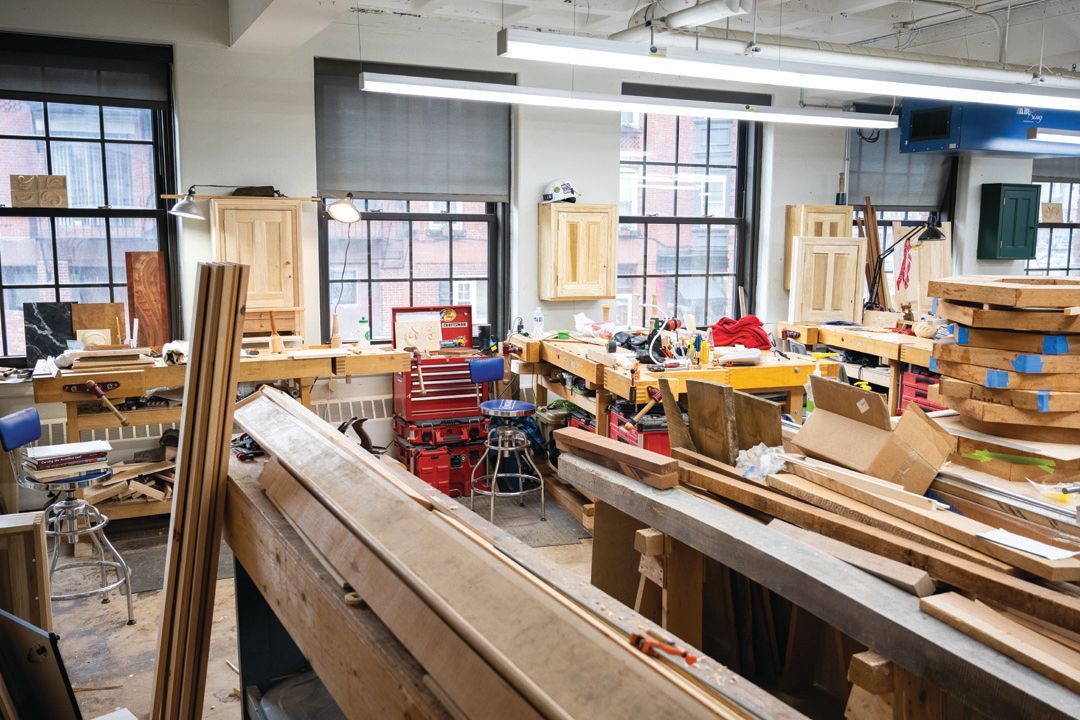
With so many new buildings popping up, and historic homes being gutted, do you believe historical renovations and traditional craftsmanship have become a lost art?
There’s opportunity for it to return, but it has been lost over the years in terms of the craftsmanship that we have established over thousands of years, which has been let go for modern conveniences, modern materials and modern engineering needs. But in the case of Notre Dame Cathedral, one of the big questions they had when it burned was if they had the talent to reproduce it in kind. Carpenters Without Borders is a group of international timber framers and artisans who got together in front of Notre Dame and built truss numbers even, and executed it quickly. They showed the country and the world that these abilities still exist out there, and at that point, the decision was made that they could make this happen in five or so years.
What Notre Dame has exhibited is that all of these trades still exist—the stone carvers, the timber framers, the wood-carvers and stained glass artists and organ builders—all these things that were lost in Notre Dame. All these tradespeople, about 2,000 of them, got together and worked on the restoration, and that’s what’s important to say to people. There aren’t just these trades of electricians, plumbers and carpenters, but there are all these other trades—timber framers and stained glass artists and stone carvers—that are still viable means of making a good income and enjoying what you do
